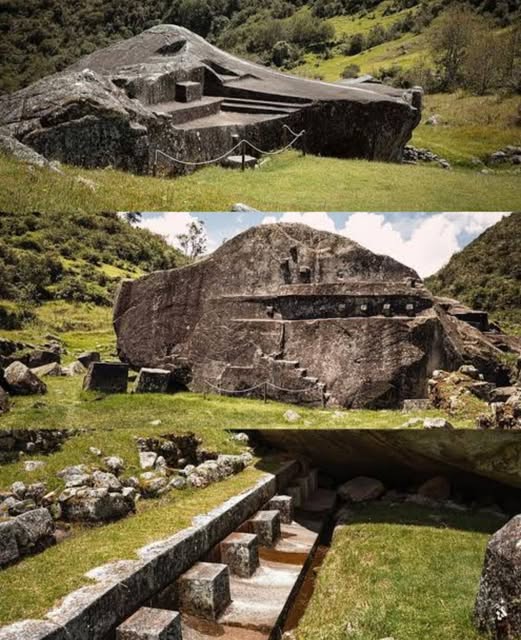Exploring the Mysteries of Yurak-Rumi
Perched in the Andean highlands of Peru’s Cusco region lies Yurak-Rumi, an archaeological gem that remains lesser known but immensely significant in understanding the Inca civilization. Translating to “White Stone” in Quechua, Yurak-Rumi reflects the Incas’ masterful relationship with their environment, engineering ingenuity, and spiritual depth. As one of the many sacred sites scattered throughout the Inca heartland, Yurak-Rumi offers an immersive glimpse into a world where agriculture, cosmology, and architecture seamlessly merged.
Location and Historical Context
Yurak-Rumi is situated in the Cusco region, which served as the political and spiritual epicenter of the Inca Empire. Though overshadowed by more prominent sites like Machu Picchu and Sacsayhuamán, Yurak-Rumi holds its own unique place in Incan history.
This archaeological site is believed to have been active during the height of the Inca Empire (1400s to early 1500s). The Inca expanded rapidly during this period, constructing sophisticated settlements, roads, and farming systems across challenging Andean terrain. Yurak-Rumi emerged as a local administrative and ceremonial center, reflecting the empire’s broader strategies of integrating environment and governance.
Architectural Marvels: Stonework and Urban Design
Like other Inca sites, Yurak-Rumi is distinguished by its meticulous stonework. The Incas were known for their ability to carve and fit stones so precisely that mortar was unnecessary. Yurak-Rumi’s buildings are constructed with this same ashlar masonry, showcasing seamless joints and stones of various shapes and sizes interlocked with astonishing precision.
Key features of Yurak-Rumi include:
- Terraced Agricultural Fields: Designed to optimize crop production and manage water runoff, these terraces reflect Inca innovation in sustainable farming. They also prevent soil erosion on steep slopes.
- Ceremonial Structures: Likely used for rituals tied to agriculture, seasonal cycles, and celestial observation.
- Residential Remains: Stone foundations and remnants of living quarters suggest the presence of a small, yet organized settlement.
The use of local white stones not only lends the site its name but also enhances its spiritual and aesthetic resonance.

Inca Engineering: Innovation in Harmony with Nature
Yurak-Rumi illustrates the Inca philosophy of working with nature, rather than against it. The Incas excelled at adapting their infrastructure to mountainous terrain. The site’s terraces and water channels demonstrate their deep understanding of Andean ecosystems and water conservation.
Evidence suggests that water management systems, such as irrigation canals and drainage pathways, were incorporated into Yurak-Rumi’s layout. These systems highlight the Incas’ commitment to agricultural efficiency and environmental sustainability.
Spiritual Significance: A Sacred Landscape
Inca cosmology placed great emphasis on the sacredness of nature. Mountains (apus), rivers, and stones often held spiritual power. Yurak-Rumi, located near sacred peaks and built using significant white stones, was likely a site of spiritual rituals and astronomical observation.
Archaeological interpretations suggest that rituals tied to planting, harvesting, and solstice celebrations may have taken place here. Offerings to Pachamama (Mother Earth) and Inti (the Sun God) were likely common, reflecting the Inca belief system that linked daily life to divine cycles.

Cultural Importance: Insight into Inca Society
Studying Yurak-Rumi reveals much about Inca social organization. The presence of both agricultural and ceremonial structures indicates a multi-functional community, where farmers, priests, and administrators coexisted. The centralized planning evident in the layout reflects the empire’s ability to mobilize labor and manage local resources effectively.
It also sheds light on the ayllu system, the Inca model of community organization based on kinship and shared labor. Sites like Yurak-Rumi likely served as local hubs where regional ayllus could gather for festivals, resource distribution, and spiritual activities.
Tourism Potential: A Hidden Gem for Explorers
While Yurak-Rumi is not yet a mainstream tourist destination, it holds immense potential for cultural tourism and educational travel. Its relatively undisturbed nature offers a serene and authentic experience for visitors seeking to explore Peru’s rich heritage beyond Machu Picchu.

Visitors to Yurak-Rumi can enjoy:
- Hiking through Andean landscapes
- Observing ancient stonework up close
- Learning from local guides about Inca history and rituals
However, the site’s underdeveloped tourism infrastructure also makes it vulnerable to neglect and damage. Responsible tourism practices and community-based conservation efforts are crucial to preserving this historical site.
Archaeological Research and Preservation
Ongoing archaeological work at Yurak-Rumi is uncovering new insights into Inca culture. Scholars are using modern technologies such as aerial mapping, 3D modeling, and soil analysis to better understand the site’s layout and function.
However, challenges remain. The site faces threats from:
- Environmental erosion
- Looting and illegal excavation
- Lack of formal protection and funding
Local authorities and international researchers are advocating for greater recognition and conservation efforts. Designating Yurak-Rumi as a protected heritage site could help secure its future and attract academic and tourism investments.
Conclusion: Preserving a Cultural Legacy
Yurak-Rumi stands as a powerful testament to the ingenuity, spirituality, and resilience of the Inca civilization. From its stone-carved terraces to its spiritual symbolism, the site embodies a civilization that thrived in harmony with the harsh Andean environment.
As global interest in sustainable heritage tourism grows, Yurak-Rumi offers an opportunity to engage with authentic Inca history while supporting local communities and conservation efforts. By recognizing and protecting such hidden treasures, we honor the legacy of a culture that continues to inspire and educate.


